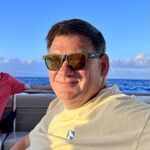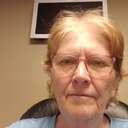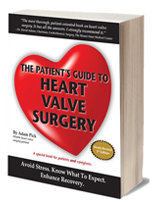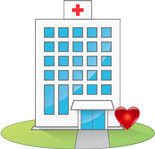About Me (In My Own Words)
Shortly after my birth in 1962, my parents were told I had a pronounced heart murmur. In 1976, at age 14, I underwent Open Heart Surgery at Mayo Clinic in Rochester. The surgeon (Danielson) removed a band of tissue beneath my aortic valve (Subaortic Stenosis). The repair has worked well for 49 years! I have been followed by cardiologists throughout my life about every five years, and as I approached 60 years of age I asked for another round of examinations to assess where things stood as I aged.
Echocardiograms, a Cardiac MRI and TEE revealed part of the tissue band remains, which is impacting the aortic and mitral valve. For the first time, I also was told I have an aneurysm of the aortic root and ascending aorta (which hovered around 4.8 cm - 5.0 cm for several years). My cardiologist in Montana advised we watch things and pursue means to reduce pressures in the heart (Beta Blockers).
My cardiologist retired, and I initiated a relationship with Mayo Clinic in Phoenix, as we are now snowbirds living in the West Valley of Phoenix. The testing has added a few new wrinkles and suggests some progression of concerns. My aortic aneurysm has been measured at 5.3 cm and 5.7 cm in the ascending aorta and aortic root, respectively. Both aortic and mitral valves are in the moderate-severe range of regurgitation. I am completely asymptomatic, and walk several miles a day and swim several times a week.
The cardiologists says its time to get things repaired. We have been told we should schedule surgery sometime in the next six months. We've decided to schedule the surgery in September.
UPDATE 10/19/2025:
I’m updating my status after successfully arriving on the other side of heart valve surgery. Yesterday - on Day 37 following my initial surgery - I was finally discharged from the superb care of the Mayo Clinic Hospital in Phoenix, and I have enjoyed my first full day back in my own home. It was truly a journey - a trying and challenging one - but one still full of hope and trust. I am confident I am on the road to a full recovery and many years of longevity with a new and improved heart.
A word of caution to the reader: It would be easy to hear my story and grow concerned about your own story if you are waiting for some sort of heart valve surgery. For the vast majority of people who are considering heart valve surgery, your procedure is very likely a relatively simpler procedure, and you should not let some of the challenges of my journey cause you too much concern. If anything, it may give you something to discuss with your surgeon and understand all of the ways the surgeon's team may have to quickly identify any developing risks following surgery, and to put up guardrails very quickly and effectively, and keep you and your heart on the road if similar complications arise.
I was born with a congenital heart defect, which left a band of tissue underneath my aortic valve and extending elsewhere in the heart. The condition was detected upon birth, and I was followed closely by competent doctors in my childhood. As I reached age 14, the symptoms of the obstruction became quite concerning for my parents, my doctors, and me. My doctors referred us to the excellent surgeons at Mayo Clinic in Rochester, Minnesota.
In August 1976, I had open heart surgery for the first time. The surgeon removed a portion of the tissue which was interfering with the operation of my left ventricle and outflow into the aorta. He did not remove the rest of the tissue because, in his judgment, doing so would likely interfere with the electronic circuitry of the heart, and I was too young for those sorts of consequences.
The surgery in 1976 served me quite well, for which I am grateful. As I matured, I was aware that I would need to make annual visits to an echocardiogram machine and to a cardiologist. I always understood it was likely that a further surgery or other intervention would be needed as I aged, and I wanted to stay on top of it. In the interim, I kept active and hopeful.
For decades, my yearly exams revealed I had a mild stenosis or regurgitation from the aorta and that was it. As I turned 60, I asked my family practice doctor to refer me to a cardiologist who would help me gauge whether and when any additional work would be needed. The cardiologist I was referred to did an excellent job applying newer tests and industry standards to examining the status and prognosis for my heart. He concluded that both my aortic valve and mitral valve were now regurgitating in the moderate to severe range. In addition, I learned that my ascending aorta was in a mild aneurysm (of 4.1 cm).
We worked up all of these findings and had a discussion. The doctor wanted to treat it using blood pressure medication and continued to watch it. That was fine with me, as I was completing my career and felt no need to hurry up any surgery. It also was in the middle of the Covid lockdown. The cardiologist was very clear, however, that surgery was likely to take place. He also emphasized it would be a complex surgery, which needed to take place at a specialized facility with experienced doctors.
Fast-forward to 2024, when my cardiologist suddenly was exited from the practice, and my wife and I retired to live part-time in Arizona. For several months, I tried to find a replacement cardiologist in Montana, so that I could continue my treatment in the summers when I was up there. One day, we were driving by the Mayo Clinic hospital in North Phoenix, and I realized that right here is a facility that better fit my situation. I made an appointment and received an excellent consultation from Dr. Said Alsidawi. My patient ID, assigned in 1976, was resurrected in 2025!
In addition to a new set of tests previously performed in Montana, other testing not performed before brought home the truth that my heart was working harder than it wanted to, and it was time to get matters addressed. My aortic valve was leaking in the medium to severe range, my ascending aorta was larger than previously measured and distended in an irregular shape, and the mitral valve had a prolapse and other conditions which caused it to leak in the moderate to severe range as well. It was also suggested that cleaning up the original subaortic tissue band would be an important thing to do for the longevity I sought.
I was referred to Dr. Kristen Sell-Dottin, a remarkable cardiothoracic surgeon at Mayo Clinic in Phoenix. My wife and I met with her and were immediately impressed with her approach to these circumstances. She is competent but not cocky and very approachable. She is not into marketing the way other surgeons - all immensely qualified - may be. Dr. Sell-Dottin concurred with the assessment that the circumstances recommended surgery earlier rather than later. We were given the option to schedule surgery immediately in the spring of 2025 or to come back in six months after going on a much-anticipated vacation and then have the surgery done in September. We chose to wait the six months and return to Arizona a little earlier than our usual snowbird schedule.
The surgery was scheduled for September 12. My wife and I arrived from Montana on September 1 to open up our snowbird house and to do the usual pre-op things that need to be done. All that was done, and on September 12, I went into the operating room, had my heart stopped, and Dr. Sell-Dottin began the process of cleaning up and repairing my heart.
It is important to stress that my case was a redo of a prior surgery. It is not always clear, I understand, just what a surgeon is going to find in a heart that’s already been operated on. In my circumstance, there were significant things that needed to be addressed which related to the scarring left by the prior surgery and, perhaps, the life over the prior 49 years. If you have had a prior open heart surgery or two, make sure you talk with your team about the implications of working through the prior surgical site. And I would suggest that any redo of a prior open heart surgery needs to be done in a Center of Excellence, like Mayo's Phoenix facility or one of the COE's identified by this website.
We had a whole list of things that were to be accomplished going into the surgery. We knew I needed a new aortic valve and the Bentall procedure. The surgeon had hoped that she could repair the mitral valve rather than replace it. And we were going to clean up whatever tissue remained from the original birth defect.
My heart was on bypass for 4 1/2 hours. Most of what we wanted to accomplish was accomplished. The mitral valve was resistant to being corrected and so a new bovine valve was put in, beside my new bovine aortic valve and Dacron aortic graft. The heart restarted after bypass just fine, and I was brought into recovery.
As I was recovering from surgery, I experienced a decline in my right-side function of my heart. The doctors describe it as right-side “stunning“. Essentially, when a heart has been poked and prodded and the system on a pump for 4 1/2 hours, the more sensitive right ventricle and atria of the heart simply become stunned or "sprained" and don't want to function as well as they should.
I was sedated at the time, but my wife with the assistance of my doctor-brother made excellent choices to follow the doctors' recommendations to set up a number of guardrails to aid what they began to identify as my stunned right side of my heart. These involved some pretty remarkable technologies and methods which I am still learning about: An "RVAD" machine, lots of special medications, continuous dialysis to remove burdensome fluids, high-flow nitrous oxide, feeding tube, etc. These were all put into place in an expert fashion on day 4 of my hospitalization, and I remained under sedation for another two days. I woke to have my breathing tube removed on day 6.
The guardrails remained in place while the right side of my heart recovered, and then were slowly and expertly removed. This process took the remainder of my four-week ICU stay. It also was determined that a permanent pacemaker would need to be installed. Time moves slowly in this process - one cannot think in terms of days but rather phases of progress which may take weeks. In the meantime, the excellent nursing team of Mayo's cardiac intensive care unit did magic.
So here I am, finally back in my home. I have a new bovine aortic valve, a Bentall graft in my aorta, a new bovine mitral valve, and a permanent three-lead Boston Scientific pacemaker. I am still on periodic dialysis as my kidneys are slowly waking and resuming their filtering function. It is likely the kidneys will come back online in the coming weeks.
Mainly, the challenge is to recover while using muscles in a body that was bedridden for five weeks. Gratefully, my muscles are responding, but they are beginning at a very atrophied state. I will follow up with the surgeon and cardiologist in about 10 days, and then I have 12 weeks of Cardio Rehab. I am looking forward to it all.
I also have a life ahead of me, which is more likely to be productive, positive, and healthy. The doctors confirm my understanding coming out of the surgery that even though I was hospitalized for so long, my heart is much, much healthier than it was the day before the surgery. I was asymptomatic going into the surgery, which made it difficult to choose that path. But the doctors assure me, and I believe, within a matter of years, I would have begun to suffer serious symptoms - including a possible dissection of the aorta - and my heart's ability to survive emergency surgery at that time would have been much more limited.
In short, I took a shot at health, and that shot has succeeded. I am grateful.
I relied upon and used the resources of this website in my own lead-up to surgery. Having the knowledge gained here was essential in responding to the events that came up during my hospitalization. But also, I made a decision to limit my exposure to news and social media following the surgery, to preserve my emotional and psychological strength for my own recovery. This has been an important part of my recovery, and I am going to continue the seclusion for now. So I don't imagine I will be checking in here too often. It is certainly not anything chosen in disrespect for the marvelous contribution Adam and the community have made to those making similar journeys - it is simply understanding how I am wired and making sure I align with that for now. I am grateful for those who have previously reached out with great advice and concern, as well as the all-important prayers. I return the prayer for all who are on this journey. Godspeed everybody. You got this.
More Info About Me & My Heart
More About Me
-

I am from:
Goodyear, Arizona
-

My surgery date is:
September 12, 2025
-

I was diagnosed with:
Aortic Regurgitation
Mitral Regurgitation
Aortic Aneurysm
-

My surgery was:
Aortic Valve Replacement
Aortic Aneurysm Replacement
Mitral Valve Replacement
Pacemaker Implant
-

-

 I am from: Goodyear, Arizona
I am from: Goodyear, Arizona My surgery date is: September 12, 2025
My surgery date is: September 12, 2025






